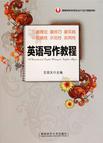英语写作教程
出版时间:2010-8 出版社:湖南师范大学出版社 作者:王崇义 著 页数:324
内容概要
全书由10章组成,旨在系统而简明地阐述从句子到段落和文章(writingforgeneralpurpose)以及各类特殊用途写作,包括各类书信、便条、图表信息转换、概要等(writingforspecialpurpose)的写作理论与技巧。各章提供了帮助说明写作理论和技巧的丰富的例句、例段和体裁多样的各类范文,并配有形式多样的练习。书末有包括练习参考答案在内的5个实用附录。 ①《高等院校英语专业21世纪课程教材·英语写作教程》基于作者多年从事英语写作教学的心得和体会,在借鉴英语国家写作教学经验的基础上编撰而成,富有权威性和创新性;②全书比较全面系统地阐述了从选词锻句到组段谋篇的各类英语写作的基本理论和技巧,富有科学性和知识性;③书中配有丰富的例句、例段和体裁多样的各类范文,内容生动有趣,语言灵活地道,富有可读性和示范性;④书中各章均配有形式多样的练习,书末有包括练习参考答案在内的5个附录,富有实用性和可操作性。
书籍目录
Chapter One Mechanics1.1 General Remarks1.2 Margins,Paragraphing,and Handwriting1.2.1 Margins1.2.2 Paragraphing1.2.3 Handwriting1.3 Syllabification/Syllable Structure1.4 Abbreviation and Numerals1.4.1 Abbreviations1.4.2 Numerals1.5 CapitalizationExercisesChapter Two Punctuation Marks2.1 General Remarks2.2 Line-beginning Punctuation Marks2.3 Sentence-ending Punctuation Marks2.3.1 The Period / The Full Stop2.3.2 The Question Mark2.3.3 The Exclamation Point2.4 Internal Punctuation Marks2.4.1 The Comma2.4.2 The Semicolon2.4.3 The Colon2.4.4 Quotation Marks2.4.5 The Dash2.4.6 Parentheses2.4.7 Brackets2.4.8 The Apostrophe2.4.9 The Hyphen2.4.10 The Virgule / Slant2.4.11 Italics / Underlining2.5 Some Points about the Use of Punctuation MarksExercisesChapter Three Diction3.1 General Remarks3.2 Appropriateness and Sense of Style3.2.1 Sense of Style3.2.2 Degree of Word Formality3.3 Exactness and Use of Synonymous Words and Expressions3.4 Specificity, Concreteness, and Conciseness3.5 Imagery / Figures of Speech3.5.1 Metaphor and Simile3.5.2 Personification3.5.3 Hyperbole3.5.4 EuphemismExercisesChapter Four Sentence Writing4.1 General Remarks4.1.1 Sentence Sense4.1.2 The Requirements of an Effective Sentence4.1.3 Sentence Elements4.1.4 Sentence Patterns4.2 Parts of Speech and Their Respective Functions and Positions in a Sentence4.2.1 Nouns4.2.2 Pronouns4.2.3 Adjectives4.2.4 Adverbs4.2.5 Prepositions4.2.6 Conjunctions4.3 Phrases, Clauses, and Sentence Fragments4.3.1 Phrases4.3.2 Clauses4.3.3 Recognizing and Avoiding Sentence Fragments4.4 Classification of Sentences4.4.1 Declarative, Interrogative, Imperative, and Exclamatory Sentences4.4.2 Simple, Complex, Compound, and Compound-complex Sentences4.4.3 Loose, Periodic, Mixed, and Balanced Sentences4.4.4 Long and Short Sentences4.4.5 Recognizing and Avoiding Comma splices and Fused Sentences4.5 Ways of Achieving Sentence Variety4.5.1 Achieving Sentence Variety via Combination4.5.2 Achieving Sentence Variety via Coordination4.5.3 Achieving Sentence variety by Using Parallel Structure4.5.4 Achieving Sentence Variety via Subordination4.5.5 Achieving Sentence Variety by Using Modifying Phrases4.5.6 Achieving Sentence Variety by Using Appositives4.5.7 Achieving Sentence Variety by Applying Inversion4.5.8 Achieving Sentence Variety by Employing Emphatic Sentence Structures4.5.9 Achieving Sentence Variety by Using Inanimate SubjectsExercisesChapter Five Paragraph Writing5.1 General Remarks5.2 Types of Paragraphs5.2.1 The Topical Paragraph5.2.2 The Introductory Paragraph5.2.3 The Transitional Paragraph5.2.4 The Conclusion Paragraph5.3 The Basic Structure and Qualities of a Topical Paragraph5.3.1 The Unity of a Topical Paragraph5.3.2 The Topic Sentence(TS) of a Topical Paragraph5.3.3 The Supporting Sentences(SS) in a Topical Paragraph5.3.4 The Concluding Sentence(CS) in a Topical Paragraph5.3.5 The Coherence of a Topical Paragraph5.3.6 The Order of a Topical Paragraph5.3.7 The Continuity of a Topical Paragraph5.3.8 The Completeness of a Topical Paragraph5.4 Steps Usually Taken in Writing a Topical Paragraph5.5 Evaluation of a Topical ParagraphExercisesChapter Six Essay Writing6.1 General Remarks6.2 The Basic Structure of an Essay6.2.1 The Introduction of an Essay6.2.2 The Body of an Essay6.2.3 The Conclusion of an Essay6.3 Types of Essays6.3.1 Narrative Essays6.3.2 Descriptive Essays6.3.3 Expositive Essays6.3.4 Argumentative Essays6.4 The Process of Writing an Essay and Evaluation of an Essay6.4.1 The Process of Writing an Essay6.4.2 Evaluation of an Essay6.5 Sample Essays and DiscussionsExercisesChapter Seven Letter Writing7.1 General Remarks7.2 Addressing an Envelope7.3 The Format/Lay-out of a Letter7.3.1 The Heading7.3.2 The Date7.3.3 The Salutation7.3.4 The Body7.3.5 The Complimentary Close7.3.6 The Signature7.4 Personal Letter Writing7.4.1 Family Letter Writing7.4.2 Friendly Letter Writing7.5 Social Letter WritingExercisesChapter Eight Note Writing8.1 General Remarks8.2 The Content of a Note8.3 The Language of a Note8.4 The Format of a Note8.5 Guidelines for Writing Effective NotesExercisesChapter Nine Business Writing9.1 General Remarks9.2 The Format of a Business Letter9.2.1 The Heading and the Date9.2.2 The Inside Address9.2.3 The Salutation9.2.4 The Body9.2.5 The Complimentary Close9.2.6 The Signature9.3 Application Letter and Resume Writing9.3.1 A Request Letter for an Application Form9.3.2 A Sample Letter of Application9.3.3 General Remarks about Resume Writing9.3.4 Sample Resume9.4 Sample Business Letters for Various Purposes9.5 Evaluation of a Business LetterExercisesChapter Ten Miscellaneous Practical Writing10.1 General Remarks about Diagrammatic Information Transferring10.2 The Content and Some Useful Expressions Used in Diagrammatic Description10.3 Steps Usually Taken in Diagrammatic Description and Sample Articles10.3.1 Steps Usually Taken in Diagrammatic Description10.3.2 Sample Articles of Diagrammatic Description10.4 Summary Writing10.4.1 General Remarks about Summary Writing10.4.2 Summary Writing Process101 5 E-mail WritingExercisesAppendix Ⅰ Correction SymbolsAppendix Ⅱ The Fifty States of U.S.A.and Their AbbreviationsAppendix Ⅲ Writing TermsAppendix Ⅳ Useful Expressions and Idioms and ProverbsAppendix Ⅴ Key to ExercisesBibliography
编辑推荐
《高等院校英语专业21世纪课程教材·英语写作教程》是在《大学英语写作》一书的基础上所编写的。全书由十章组成,旨在系统而简明地阐述从句子到段落和文章以及各类特殊用途写作,包括各类书信、便条、图表信息转换、概要等的写作理论和技巧。各章提供了帮助说明写作理论和技巧的丰富的例句、例段和各类范文,并分别配有形式多样的练习。书末有包括练习参考答案在内的五个附录。该书兼有教材与手册的功用。可作为大学英语专业本科生、研究生的英语写作教材,也可作为中学和大学英语教师及各行各业从事英语书面交际的工作者的参考用书。
图书封面
评论、评分、阅读与下载
